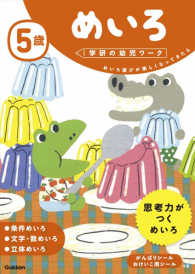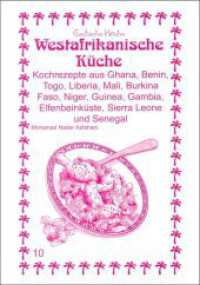Full Description
Ostia, the Roman settlement founded at the mouth of the river Tiber, was the port of the imperial capital and one of the most important urban centers in the Mediterranean world during the last decades of the Roman Republic and the Early and High Empires. The town's role as a maritime mercantile hub explains why, in its heyday, it was Italy's largest town after the mighty Rome. Ostia is still important today, but now because of the impressive remains of its buildings, inscriptions, and even more numerous archaeological objects--and what they can tell us about the people who lived there, or merely visited, or those whose ships anchored in one of Ostia's harbors.
How did migration, slavery, new religions, and the hard work in the harbors impact Ostia's inhabitants during the period 50 BCE-250 CE? How did these populations behave, and what did they think of themselves, the surrounding world, and their place in it? To answer these questions, Christer Bruun uses his profound knowledge of international scholarship and his mastery of thousands of primarily Latin inscriptions. Initially, he focuses on how the physical environment impacted the inhabitants by studying how neighborhoods created social bonds, what monuments can tell us about cultural memory, and how Ostia's maritime atmosphere impacted this population's consciousness. He then analyzes ideological trends within specific segments of the population--senators, women, the freeborn municipal elite, Augustales and freedmen, and the general population (free, slaves, immigrants)--to better answer questions about their evolving identities. Who were they, beyond their legal and formal distinctions? Bruun's answers to this question are often unexpected. For example, Ostia's women, he argues, had more opportunities there than anywhere else in the Roman world. This ambitious history of a town that was constantly changing, always in flux, reveals elements of an "Ostian" ideology, but also leaves readers with clear signs of conflict among these ideas, opening previously unimagined dimensions of life in Ostia.
Contents
I: Ostia: Population, Society, and Identities
II: Fundamental Structures of Ostia and of the Ostian Polity
III: Local Emotions, Attachments, and the Organization of Space and Population
IV: Memoria and History at Ostia
V: Extending Many Hands in Friendly Welcome to those Arriving from the sea: The Maritime Atmosphere
VI: Ostia Open Town-For Senators. who Ran the Place?
VII: The Municipal Elite
VIII: Civic Spirit Among the Augustales and other Sub-Elite Groups
IX: The Ordinary People of Ostia: Provocative Questions
X: Ostia: A City of Women and Children?
XI: The Roman Emperors and Ostia
XII: Occupations, Work, Identities: Some Aspects of the Ostian Economy
XIII: Mobilizing the Ostian Population
XIV: Conclusions. More Than A Rome In Miniature: A New World








